Abstract
Joint attention (JA) initiation is defined in cognitive-developmental psychology as a child's actions that verify or produce simultaneous attending by that child and an adult to some object or event in the environment so that both may experience the object or event together. This paper presents a contingency analysis of gaze shift in JA initiation. The analysis describes reinforcer-establishing and evocative effects of antecedent objects or events, discriminative and conditioned reinforcing functions of stimuli generated by adult behavior, and socially mediated reinforcers that may maintain JA behavior. A functional analysis of JA may describe multiple operant classes. The paper concludes with a discussion of JA deficits in children with autism spectrum disorders and suggestions for research and treatment.
Keywords: joint attention, social reinforcer, development, autism
Full text
PDF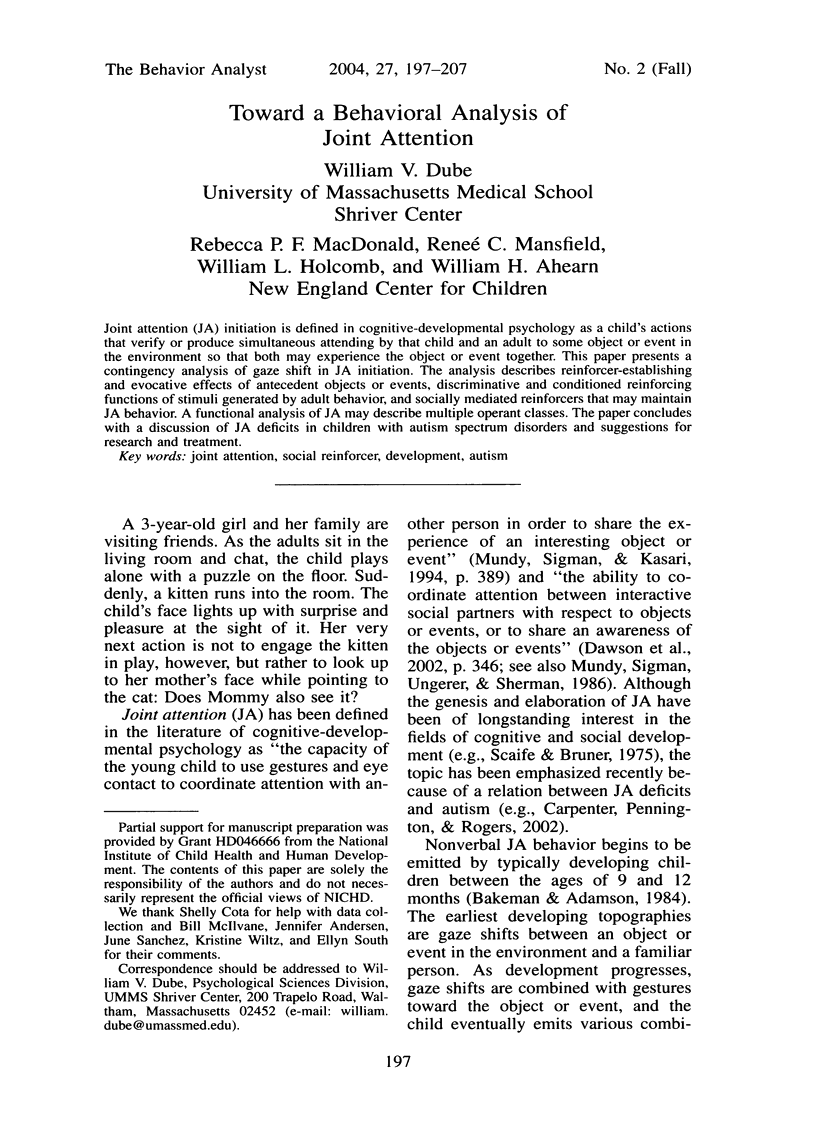
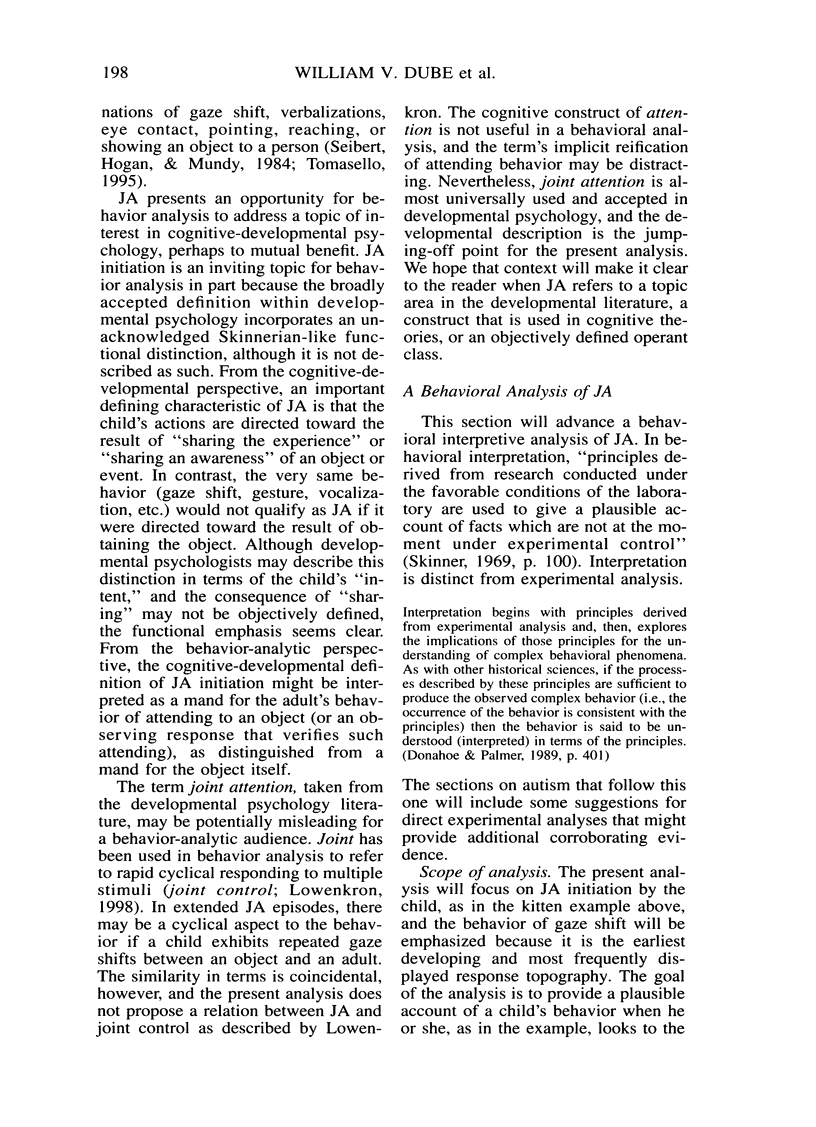
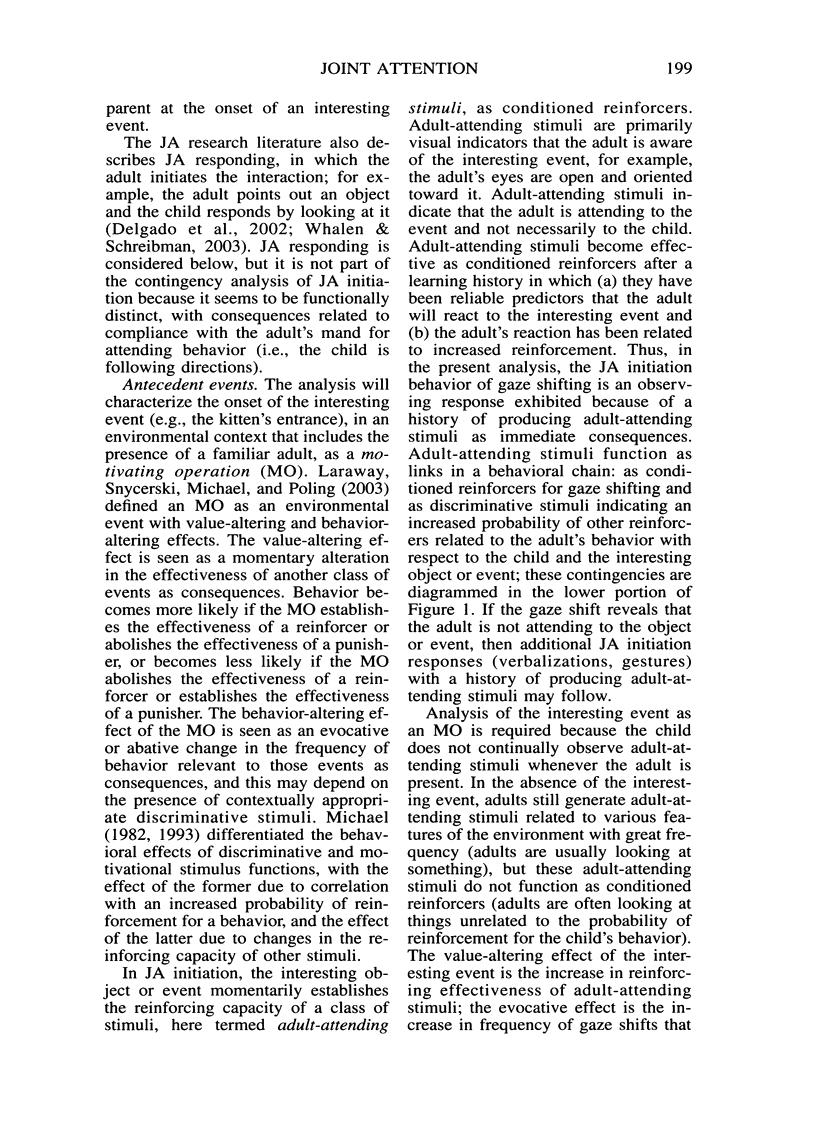
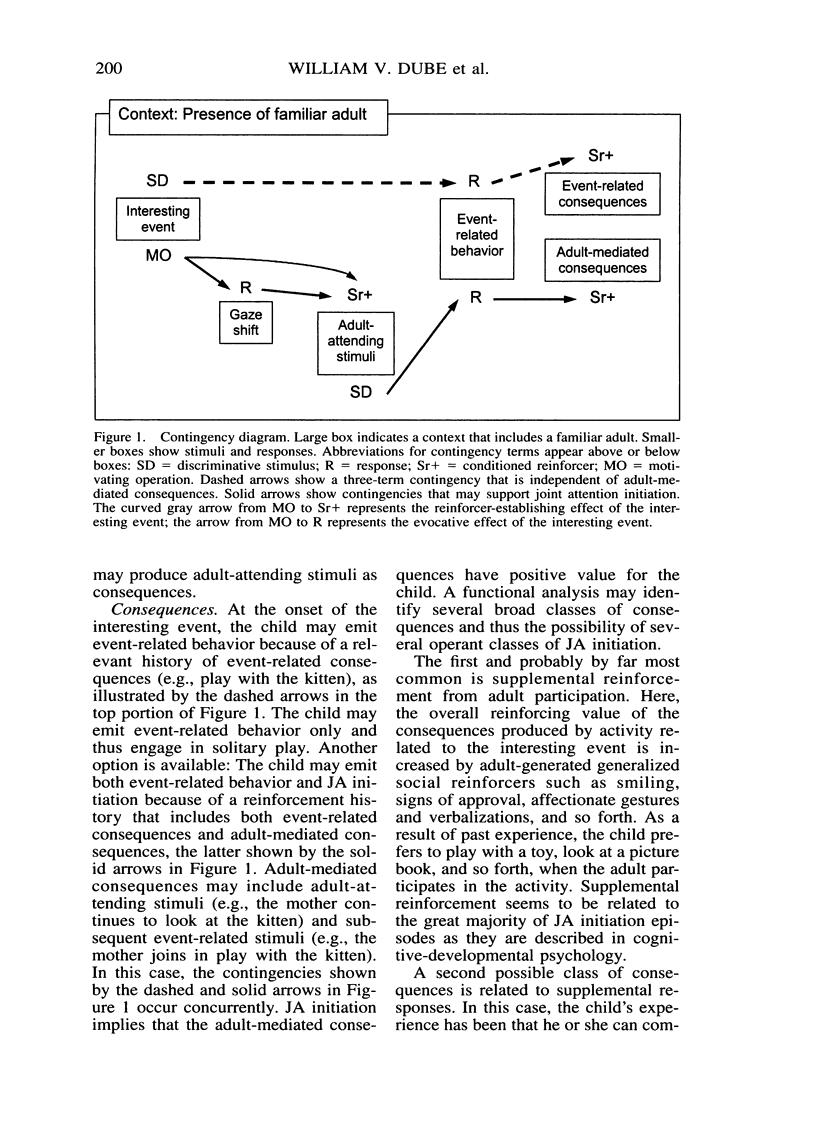
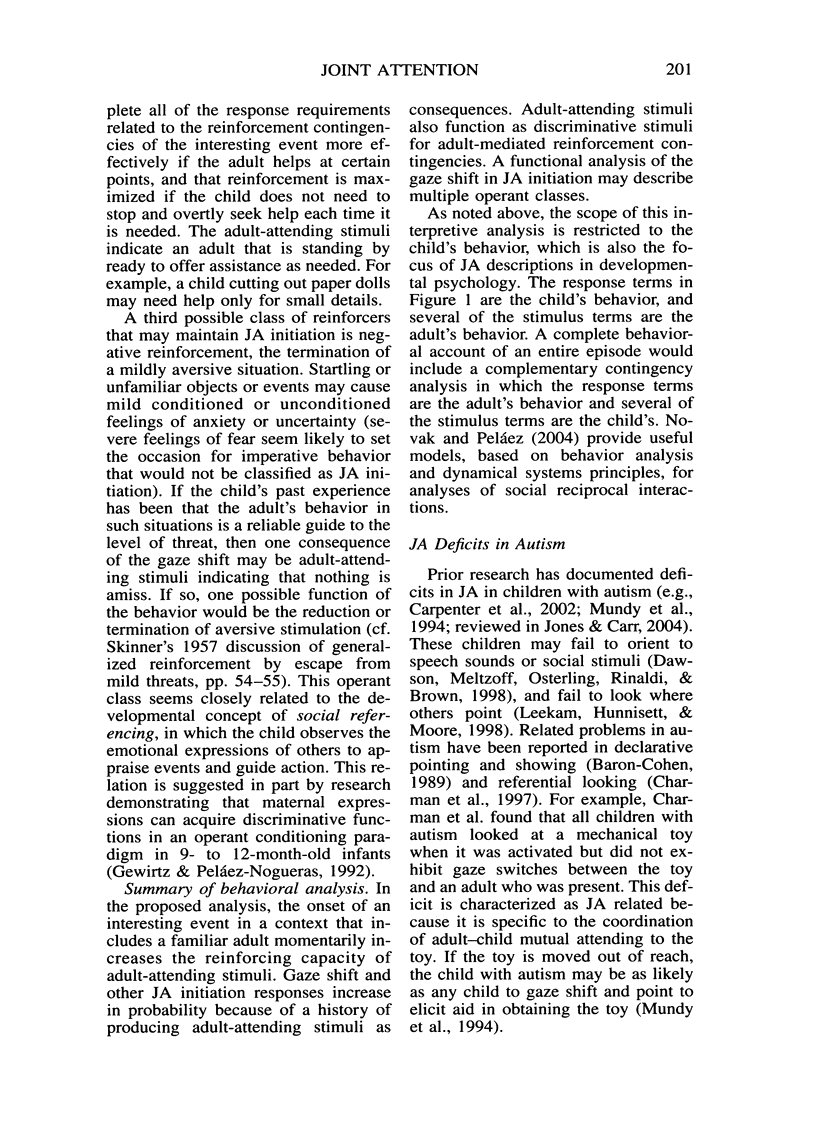
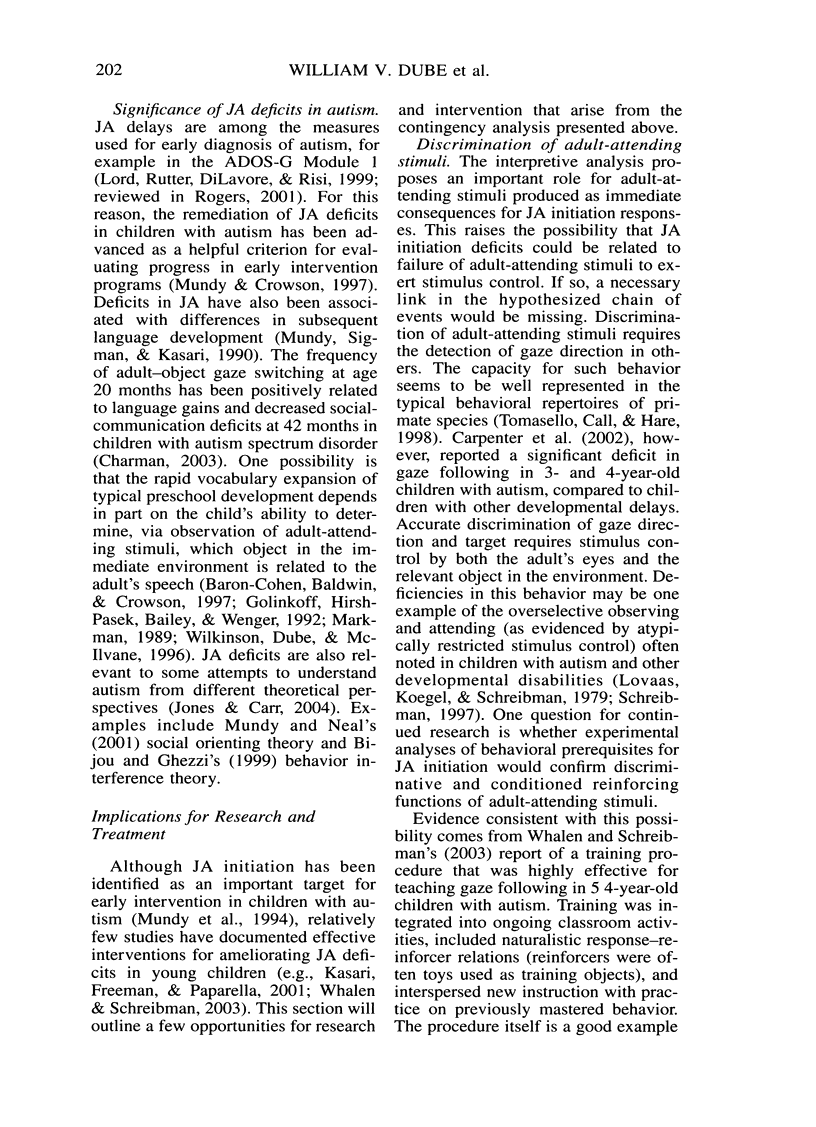
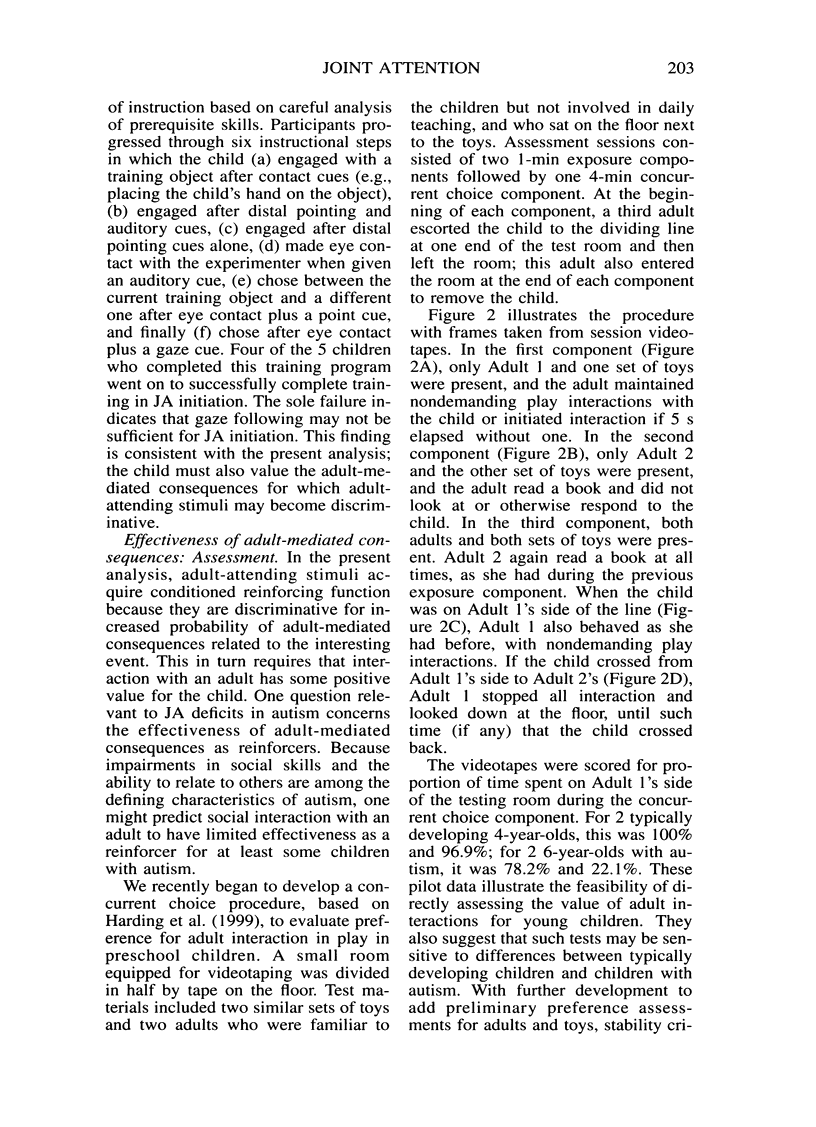

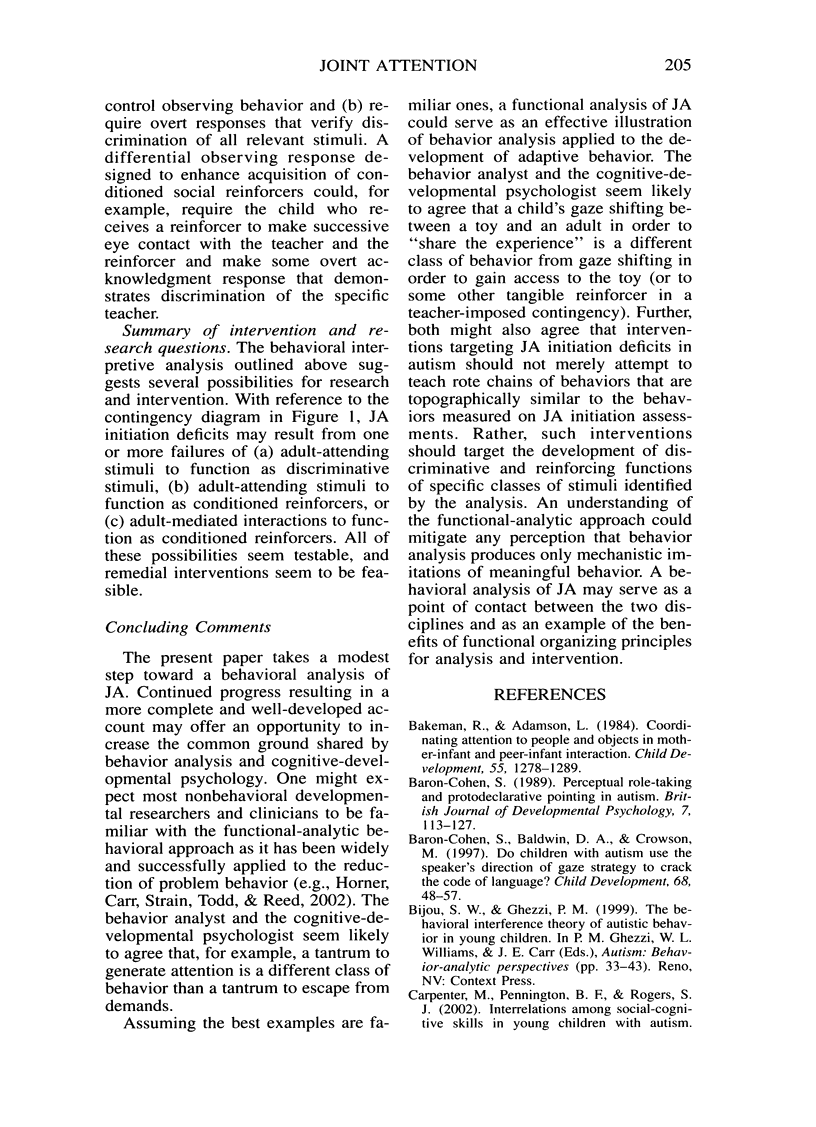


Images in this article
Selected References
These references are in PubMed. This may not be the complete list of references from this article.
- Bakeman R., Adamson L. B. Coordinating attention to people and objects in mother-infant and peer-infant interaction. Child Dev. 1984 Aug;55(4):1278–1289. [PubMed] [Google Scholar]
- Baron-Cohen S., Baldwin D. A., Crowson M. Do children with autism use the speaker's direction of gaze strategy to crack the code of language? Child Dev. 1997 Feb;68(1):48–57. [PubMed] [Google Scholar]
- Carpenter Malinda, Pennington Bruce F., Rogers Sally J. Interrelations among social-cognitive skills in young children with autism. J Autism Dev Disord. 2002 Apr;32(2):91–106. doi: 10.1023/a:1014836521114. [DOI] [PubMed] [Google Scholar]
- Charman T., Swettenham J., Baron-Cohen S., Cox A., Baird G., Drew A. Infants with autism: an investigation of empathy, pretend play, joint attention, and imitation. Dev Psychol. 1997 Sep;33(5):781–789. doi: 10.1037//0012-1649.33.5.781. [DOI] [PubMed] [Google Scholar]
- Charman Tony. Why is joint attention a pivotal skill in autism? Philos Trans R Soc Lond B Biol Sci. 2003 Feb 28;358(1430):315–324. doi: 10.1098/rstb.2002.1199. [DOI] [PMC free article] [PubMed] [Google Scholar]
- Dawson G., Meltzoff A. N., Osterling J., Rinaldi J., Brown E. Children with autism fail to orient to naturally occurring social stimuli. J Autism Dev Disord. 1998 Dec;28(6):479–485. doi: 10.1023/a:1026043926488. [DOI] [PubMed] [Google Scholar]
- Dawson Geraldine, Munson Jeffrey, Estes Annette, Osterling Julie, McPartland James, Toth Karen, Carver Leslie, Abbott Robert. Neurocognitive function and joint attention ability in young children with autism spectrum disorder versus developmental delay. Child Dev. 2002 Mar-Apr;73(2):345–358. doi: 10.1111/1467-8624.00411. [DOI] [PubMed] [Google Scholar]
- Delgado Christine E. F., Peter Mundy, Crowson Mary, Markus Jessica, Yale Marygrace, Schwartz Heidi. Responding to joint attention and language development: a comparison of target locations. J Speech Lang Hear Res. 2002 Aug;45(4):715–719. doi: 10.1044/1092-4388(2002/057). [DOI] [PubMed] [Google Scholar]
- Dube W. V., McIlvane W. J. Reduction of stimulus overselectivity with nonverbal differential observing responses. J Appl Behav Anal. 1999 Spring;32(1):25–33. doi: 10.1901/jaba.1999.32-25. [DOI] [PMC free article] [PubMed] [Google Scholar]
- Gutowski Stanley J., Stromer Robert. Delayed matching to two-picture samples by individuals with and without disabilities: an analysis of the role of naming. J Appl Behav Anal. 2003 Winter;36(4):487–505. doi: 10.1901/jaba.2003.36-487. [DOI] [PMC free article] [PubMed] [Google Scholar]
- Harding J. W., Wacker D. P., Berg W. K., Cooper L. J., Asmus J., Mlela K., Muller J. An analysis of choice making in the assessment of young children with severe behavior problems. J Appl Behav Anal. 1999 Spring;32(1):63–82. doi: 10.1901/jaba.1999.32-63. [DOI] [PMC free article] [PubMed] [Google Scholar]
- Horner Robert H., Carr Edward G., Strain Phillip S., Todd Anne W., Reed Holly K. Problem behavior interventions for young children with autism: a research synthesis. J Autism Dev Disord. 2002 Oct;32(5):423–446. doi: 10.1023/a:1020593922901. [DOI] [PubMed] [Google Scholar]
- Kasari Connie. Assessing change in early intervention programs for children with autism. J Autism Dev Disord. 2002 Oct;32(5):447–461. doi: 10.1023/a:1020546006971. [DOI] [PubMed] [Google Scholar]
- Koegel R. L., Schreibman L. Teaching autistic children to respond to simultaneous multiple cues. J Exp Child Psychol. 1977 Oct;24(2):299–311. doi: 10.1016/0022-0965(77)90008-x. [DOI] [PubMed] [Google Scholar]
- Laraway Sean, Snycerski Susan, Michael Jack, Poling Alan. Motivating operations and terms to describe them: some further refinements. J Appl Behav Anal. 2003 Fall;36(3):407–414. doi: 10.1901/jaba.2003.36-407. [DOI] [PMC free article] [PubMed] [Google Scholar]
- Leekam S. R., Hunnisett E., Moore C. Targets and cues: gaze-following in children with autism. J Child Psychol Psychiatry. 1998 Oct;39(7):951–962. [PubMed] [Google Scholar]
- Lovaas O. I. Behavioral treatment and normal educational and intellectual functioning in young autistic children. J Consult Clin Psychol. 1987 Feb;55(1):3–9. doi: 10.1037//0022-006x.55.1.3. [DOI] [PubMed] [Google Scholar]
- Lovaas O. I., Freitag G., Kinder M. I., Rubenstein B. D., Schaeffer B., Simmons J. Q. Establishment of social reinforcers in two schizophrenic children on the basis of food. J Exp Child Psychol. 1966 Oct;4(2):109–125. doi: 10.1016/0022-0965(66)90011-7. [DOI] [PubMed] [Google Scholar]
- Lovaas O. I., Koegel R. L., Schreibman L. Stimulus overselectivity in autism: a review of research. Psychol Bull. 1979 Nov;86(6):1236–1254. [PubMed] [Google Scholar]
- Lowenkron B. Some logical functions of joint control. J Exp Anal Behav. 1998 May;69(3):327–354. doi: 10.1901/jeab.1998.69-327. [DOI] [PMC free article] [PubMed] [Google Scholar]
- McEachin J. J., Smith T., Lovaas O. I. Long-term outcome for children with autism who received early intensive behavioral treatment. Am J Ment Retard. 1993 Jan;97(4):359–391. [PubMed] [Google Scholar]
- Michael J. Distinguishing between discriminative and motivational functions of stimuli. J Exp Anal Behav. 1982 Jan;37(1):149–155. doi: 10.1901/jeab.1982.37-149. [DOI] [PMC free article] [PubMed] [Google Scholar]
- Michael J. Establishing operations. Behav Anal. 1993 Fall;16(2):191–206. doi: 10.1007/BF03392623. [DOI] [PMC free article] [PubMed] [Google Scholar]
- Mundy P., Crowson M. Joint attention and early social communication: implications for research on intervention with autism. J Autism Dev Disord. 1997 Dec;27(6):653–676. doi: 10.1023/a:1025802832021. [DOI] [PubMed] [Google Scholar]
- Mundy P., Sigman M., Kasari C. A longitudinal study of joint attention and language development in autistic children. J Autism Dev Disord. 1990 Mar;20(1):115–128. doi: 10.1007/BF02206861. [DOI] [PubMed] [Google Scholar]
- Mundy P., Sigman M., Ungerer J., Sherman T. Defining the social deficits of autism: the contribution of non-verbal communication measures. J Child Psychol Psychiatry. 1986 Sep;27(5):657–669. doi: 10.1111/j.1469-7610.1986.tb00190.x. [DOI] [PubMed] [Google Scholar]
- doi: 10.1901/jeab.1989.51-399. [DOI] [PMC free article] [Google Scholar]
- Scaife M., Bruner J. S. The capacity for joint visual attention in the infant. Nature. 1975 Jan 24;253(5489):265–266. doi: 10.1038/253265a0. [DOI] [PubMed] [Google Scholar]
- Tomasello M, Call J, Hare B. Five primate species follow the visual gaze of conspecifics. Anim Behav. 1998 Apr;55(4):1063–1069. doi: 10.1006/anbe.1997.0636. [DOI] [PubMed] [Google Scholar]
- Whalen Christina, Schreibman Laura. Joint attention training for children with autism using behavior modification procedures. J Child Psychol Psychiatry. 2003 Mar;44(3):456–468. doi: 10.1111/1469-7610.00135. [DOI] [PubMed] [Google Scholar]



